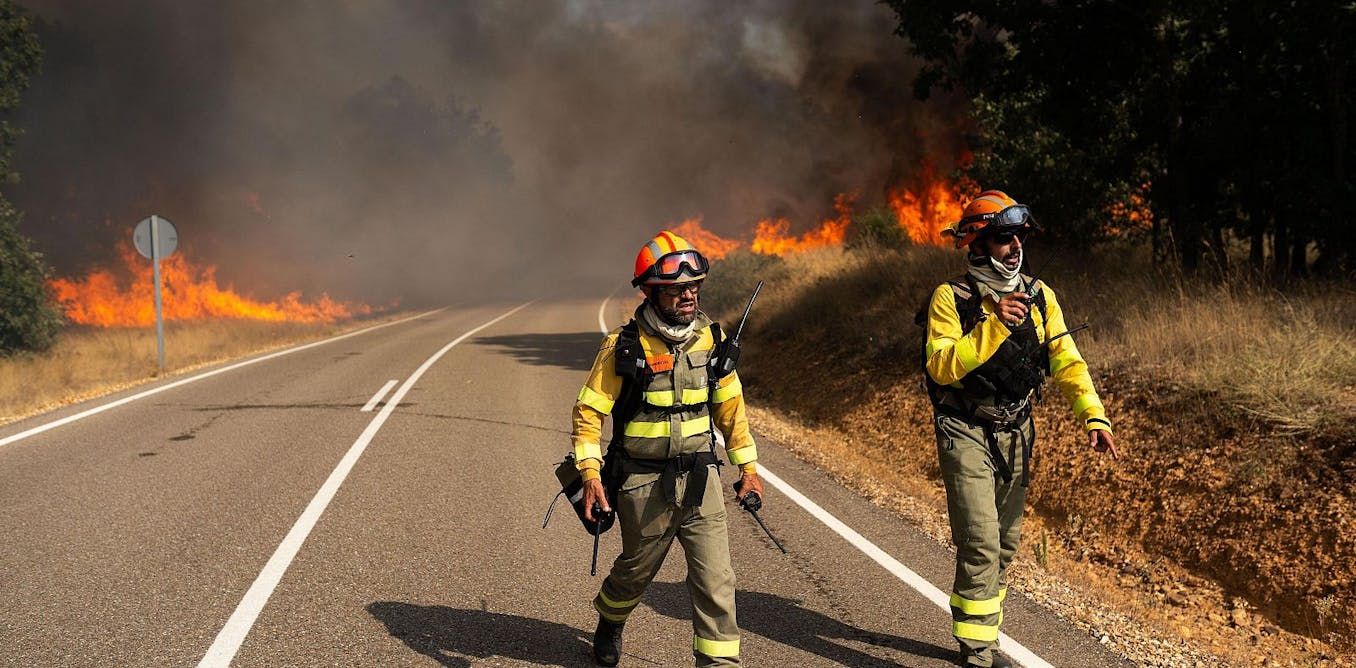Every summer, forest fires sweep across Spain, dominating headlines and leaving a trail of destruction in their wake. This year’s have been especially harsh, with devastating fires thus far in Tarifa, Zamora, the Madrid area, Galicia and Extremadura, while the UNESCO-listed natural park of Las Médulas, in León, has been completely wiped out.
Although the levels of destruction vary widely from year to year – from over 310,000 hectares burnt in 2022 to only around 48,000 in 2024 – these blazes always leave an indelible mark on biodiversity and local communities alike. Now more than ever, we have to remember that the best way to fight these disasters is by preventing them from happening in the first place.
The fire triangle
To prevent fires, we first have to understand how they start, and this is explained by one fundamental principle: the fire triangle, also known as the combustion triangle, which is made up of heat, oxygen and fuel. These three elements are essential for a fire to start and continue – if we eliminate any one of them, the fire goes out.
Heat is what starts the first flames, and can take the form of a lightning strike, an accidental spark, or often human carelessness. In Spain, over 90% of fires are caused by people.
Oxygen in the air then feeds the flame. This is why a candle goes out when you cover it with a glass – it cuts off the oxygen supply.
Last of all is the fuel, but not all fuel is the same. In a barbecue, for instance, the charcoal doesn’t burn easily – it needs more readily flammable kindling to get things started. The same thing happens in the countryside, where undergrowth made up of dried plants and branches acts as kindling: it catches fire more easily and allows fire to spread to trees.
Read more:
Flames to floods: how Europe’s devastating wildfires are fuelling its next climate crisis
Rural depopulation provides fuel
Heat and oxygen are beyond our control, which means the only realistic way to prevent fires from happening is to manage the third component: fuel.
The main culprit for its buildup is the quiet, steady abandonment of large inland areas which are no longer used for arable farming or grazing. As a result, much of the countryside that was once carefully managed is now covered with vegetation, which acts as natural kindling and fuel.
Putting out a fire should be a last resort – if it comes to this, then it is already too late. The key is not just fighting flames, but also actively managing the landscape to keep naturally occurring fuel in check. This does not mean getting rid of it altogether, but managing it properly and carefully.
“Clean” forests are not devoid of vegetation. They are healthy, robust ecosystems that shelter biodiviersity and support essential habitats.
Read more:
How high-latitude peat and forest fires could shape the future of Earth’s climate
How to value a forest
The key to preventing forest fires is creating a rural economy based on the use of forests. While this would generate much-needed employment in “la España vaciada” – “hollowed-out Spain”, the name given to the country’s depopulated rural areas – it also costs money. It is therefore essential to invest in forests.
For a forest to endure, it is necessary to create a sustainable economy centred on the products and services it provides. These include extensive livestock farming, forestry, mixed agriculture, tourism, and other non-timber products.
José Manuel Cabrero
In Spain, projects such as PRISMA, BIOVALOR and Bio+Málaga are exploring ways to convert this active management into employment and opportunities for rural areas. Other collaborative projects bringing together several regions across Europe also exist, such as SCALE-UP, RIBES, and BioRural. Initiatives like these are reimagining our forests not only as natural spaces, but also as drivers of local development.
Preventing fires through technology
Technology can also play an important role in the development of rural economies. In Navarre, for instance, emergency services have developed a geographic information system that allows them to map risk areas, visualise access routes and coordinate responses in real time.
This system, which is focused on preventing rather than extinguishing fires, maps precisely where flammable plant matter is accumulating, as well as paths and roads that are not being used, and which areas require urgent attention. It means forest management can be based on data, allowing resources to be invested where they are most needed, and to be more efficient and accurate.
Circular economy and preventing fires
Among forestry workers, there is an old maxim that summer fires are extinguished in winter. Preventing fires means rethinking how we use our forest resources year-round, and a well-managed forest, which feeds a circular “bioeconomy” through its products and services, is a safer forest.

José Manuel Cabrero
While valuing a forest reduces the threats that loom over it, caring for the wilderness also translates into a boost for the rural economy, and can bring life back to villages.
The opportunity for a more prosperous and resilient future lies in our forests. A well-managed forest is more useful, more biodiverse, and more alive – and of course, it reduces the risk of fires.



